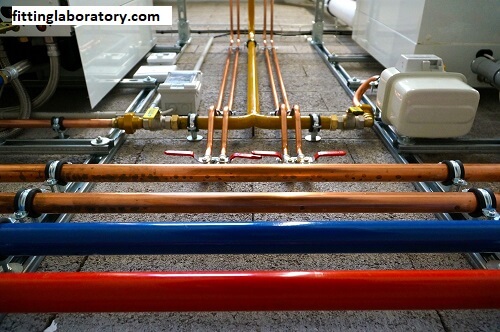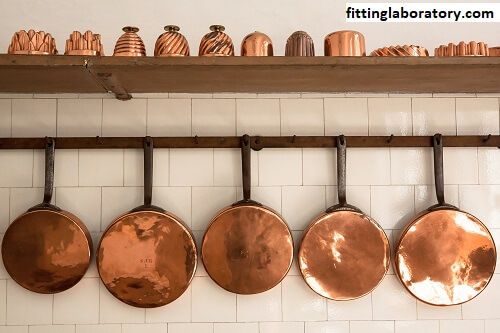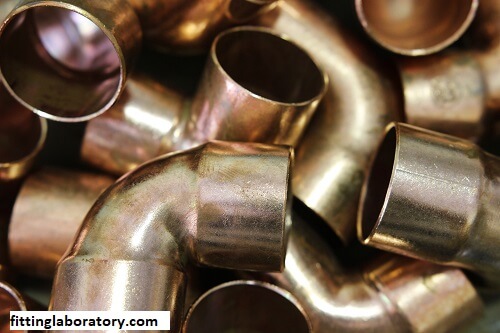Copper Compression Fittings:
Understanding Copper Compression Fittings: Everything You Need to Know
Copper compression fittings are one of the numerous essentials in plumbing and HVAC. They have gained immense popularity due to their strength, durability, and reliability in securing connections across a wide range of applications. This blog post will discuss copper compression fittings, their benefits, common applications, installation tips, and maintenance guidelines.

What Are Copper Compression Fittings?
Copper Compression Fittings:
Connect two pieces of tubing or piping by applying a copper compression fitting. These have a few parts: a fitting body, a compression ring (or ferrule), and a compression nut. The union takes place through nut tightening, compressing the ring onto the tubing to create a watertight seal.
Many plumbers and HVAC technicians use copper due to its excellent conductivity and resistance to corrosion. , thus are the optimum solution in various applications – from residential plumbing to industrial systems.
So then what are the components of Copper Compression Fittings?
Copper Compression Fittings:
- Body: This is the main part of the fitting that connects with the tubing. Typically, it is attached with compression nut threads and a socket to attach tubing.
- Compression Ring: Also known as a ferrule, this ring is typically located between the fitting body and tubing. When the nut is tightened, the compression ring deforms against the tubing while creating a good seal because of the pressure the tightening nut impairs.
- Compression Nut: The compression nut is screwed onto the fitting body and locks the tubing when tightened. It places pressure on the compression ring, which offers a strong connection.
Benefits of Copper Compression Fittings:
Copper Compression Fittings:
1. Strength:
The material copper is pretty hard. Compression fittings made from copper are durable and long-lasting do not corrode easily, resistant to extreme temperatures and even intense pressure, which makes these useful for many applications, including hot water lines and refrigeration systems.
2. Corrosion Resistant:
Copper Compression Fittings:
One noticeable attribute of copper is its corrosion resistance. Most materials rust or deteriorate with time, unlike copper. You can therefore rely on your plumbing system staying in one piece leak-free for many years.
3. Installation:
Installation of copper compression fittings is reasonably easy with minimal tools. Professional people prefer this because of the ease of its installation, while would-be DIY practitioners tend to enjoy installing it.
4. Versatility:
Copper Compression Fittings:
These fittings can be applied to a wide range of applications including water supply lines, gas lines, and refrigeration systems. Due to their versatility, these connections can be used for residential as well as commercial purposes.
5. Reusability:
Compression fittings are more reusable than soldered connections. When you need to change the configuration of your plumbing or if you want to repair a section, you can easily pull the individual fittings off and then place them back, unlike in soldered connections where one would have had to replace them.
General Applications of Copper Compression Fittings:
Copper Compression Fittings:

1. Plumbing Systems:
Copper Compression Fittings:
The primary applications of fittings in residential plumbing are for connecting the pipes of the water supply. They provide a secure and leak-free hook-up for both hot and cold water pipes. They can also be applied to irrigation pipes to ensure adequate flow of water.
2. HVAC Systems:
The copper fittings are utilized on refrigerant lines in applications of air conditioning and refrigeration systems. These are the applications that operate under high pressure and temperature ranges.
3. Gas Lines:
Fittings work well on natural gas and propane applications. They build reliable connections that can suffice with the pressure of the gas flow. They are necessary for gas appliances, outdoor grills, and so on.
4. Industrial Applications:
Copper Compression Fittings:
In industrial applications, these copper fittings may be used to connect hydraulic lines and other fluid transfer systems. Due to their durability and reliability, they are quite ideal for several industrial processes.
Installation of Copper Compression Fittings:
Copper Compression Fittings:
The installation of copper fittings is quite easy, but ensure careful attention so that the connection will be tight and leak-proof. Here is the procedure:
Tools and Materials Required:
Copper Compression Fittings:
- Copper tubing
- Copper fittings (appropriate size for your tubing)
- Pipe cutter
- Wrench or pliers
- Deburring tool (optional but advised)
- Teflon tape (for gas applications)
- Installation Steps
- Cutting Copper Tubing: Using a pipe cutter, cut the copper tubing to your desired length. A clean, straight cut ensures the best possible seal.
- Deburr the Ends: When the tube has been cut, it is very important to deburr the ends, as this will cause edges and sharp points where leakage can be found through improper sealings.
- Fit the Compression Nut onto the Tubing: Align the threaded end away from the fitting and slide the compression nut onto the end of the tubing before assembling the tubing.
- Position the Compression Ring: Slide the compression ring onto the tubing. Make sure that it sits evenly against the end of the tubing.
- Attach to the Fitting: Place the end of the tubing into the compression fitting. Make sure the compression ring snaps into place in the fitting.
- Tighten the Compression Nut: Thread the compression nut hand-tight on the fitting. Proceed to twist with a wrench or pliers. Always exercise extreme care not to over-tighten it. Over-tightening can harm the fitting and even the tubing.
- Leak Test: Once you have fitted it, turn the supply on whether it is water or gas, and find any leaks. In case there are leaks, you may tighten the compression nut slightly to stop leakages.
Maintenance of Copper Compression Fittings:
Copper Compression Fittings:
Copper compression is designed to last long, but most importantly, maintenance should be carried out to prolong the durability and effectiveness of copper fittings. Some of the maintenance tips include:
1. Routine Inspection:
Regularly inspect your plumbing and HVAC systems for signs of leaks or corrosion. The sooner you can catch leaks or corrosion the lesser it would be in terms of repair and integrity of your system.
2. Fitting Maintenance:
Copper Compression Fittings:
Clean the fittings free of debris. Dirt and grime would interfere with the sealing surfaces which might lead to a leakage.
3. Tighten Loose Connections:
If you see leakage, loosen any over-tightening of the connection. Tighten the nut a little and retort to check for leaks.
4. Replacement of Damaged Parts:
Copper Compression Fittings:
If the fitting has any kind of damaged or corroded parts such as the compression ring or nut, replace that promptly. Because of corrosion or damage, any part can prevent a tight and tight-fitting connection.
5. Professional Inspection:
For complex systems, consider scheduling routine checks with a licensed plumber or HVAC technician. They can identify potential problems and make sure your system is working correctly.
Conclusion:
Copper Compression Fittings:
Copper compression fittings play an important role in many plumbing and HVAC applications, providing reliability, versatility, and ease of assembly. The capability of forming leak-free tight connections makes them highly in demand by professionals as well as people who engage in hobbyist activities.

Familiarity with the proper installation and maintenance of the fittings, particularly their regular inspection, shall help ensure a successful outcome if you’re working in the plumbing or HVAC field. Whether it’s about undertaking a project as a homeowner or installing yourself as a contractor, copper compression fittings can guarantee the durability and performance of your installed systems.
The growing demand for sustainability and efficiency in plumbing solutions will make copper compression fittings sit atop the industry’s list for a long time because of its proven performance and adaptability it displays. The tension-free plumbing and HVAC system can now be availed by opting for the right fitting and the correct installation as well as maintenance.